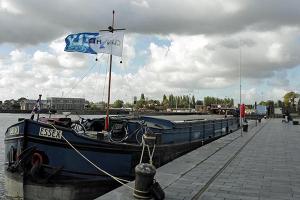Ships moored in the port have an energy demand, which is usually generated by the diesel generators on board. Until now, these pollutant quantities have been recorded using blanket estimation methods. These methods are based on transhipment volumes of the ports or on blanket assumptions such as "power requirement about 10 % of the power of the main engine".
So far, there was no good method for a realistic calculation of the amounts of pollutants expected from ships in port, which are urgently needed for the root cause analyses following the air quality measurements. In order to determine the emissions caused by moored ships, knowledge of the composition of the generators on board is necessary.
Method
LANUV developed an appropriate method. A realistic method for calculating the quantities of pollutants produced, can be determined on the basis of the following factors:
- Number, type and size of berthing ships in the harbour basins
- Geographical coordinates of the berthing location
- Average duration of berthing
- Knowledge of the composition of the generators on board and the associated emission levels and definition of a current, "average" generator for each of the different parts of the fleet.
- Determination of the characteristics and an emission factor for the average generator used for energy production.
These data were determined by the LANUV in an elaborate procedure. For the description of the generator pool, the German Ship Inspection Commission provided the data available there on the ship generators on more than 1000 inland vessels within the framework of administrative assistance.
Report
The report (click to download) contains the results of these evaluations and the procedure for estimating the emission quantities to be expected in ports or at berths. Within the framework of CLINSH, the methods described will be used for emission modelling and cause analyses of air pollution in the ports of Neuss and Duisburg.
With the presented report, LANUV NRW makes an additional contribution to the CLINSH project. With the method, a more realistic estimation of the emission quantities to be expected at the berths of the ships has become possible.

